ICTs for Safety & Security: International case study
EC MEDICI Framework of Cooperation

Session 187
Extending the scope of WSIS action line C5 Building confidence and security in the use of ICTs
On the occasion of the recent editions of the WSIS Forum MEDICI organised different workshops to showcase firstly the richness of applications and services provided by ICTs in the field of safety, security and disaster recovery and management and secondly to contribute to provide a reference point for all those working in these sectors and those who may take advantage from their outcomes. This year we continued this path selecting additional international case study both to approach new sectors and enrich the platform of skills and competences involved.
Safety and security are integral part of human rights; we must provide all the efforts in order to guarantee such rights (as stated in art 3, 22, 25 - The Universal Declaration of Human Rights). In addition, a number of SDGs are tightly connected or rely on safety and security: SDG 2, SDG3, SDG6, SGD6, SDG7, SDG8, SDG9, SDG11, SDG16, SDG17. Some of the specific fields are: food & water security, human security, safety, critical infrastructure resilience, drugs security and more.
Nowadays the demand for "safety & security" in all its forms has increased, especially quantitatively and qualitatively, making clear the need for new approaches to enable the entire sector to ensure better results.
Looking from a different perspective: we outline the role of ICTs in risks assessment and management. They are playing key roles in a number of “risky” scenarios from health and children abuse to homeland security and law enforcement, crimes, trafficking (humans, drugs, weapons, artefacts, etc.) and even safety on working places and mobility.
Of course, technology it is not enough to solve problems, it is well known and demonstrated that a holistic, interdisciplinary approach and a culture of "safety & security" taking adequately into account human factors are the basis in order to obtain good results in this area.
We must promote an interdisciplinary approach and a “culture” of safety & security, they are the basis in order to obtain good results in this area; foster the exchange of experiences and best practices among countries and promote research thanks to the WSIS.
On the occasion of previous editions of the WSIS Forum (e.g. 2014, 2015, 2016, 2017, 2018) some eminent speakers underlined the key-role played by ICTs on the occasion of natural disasters and other critical events, they said that cyber technologies have fuelled the hope of people affected by natural disasters. The availability of low-price high-performance devices and the proactive activity of clever developers have boosted the production of a number of smart solutions spread in different countries all-over the world. Due to the current “silos” segmenting these sectors it is quite difficult to have a comprehensive vision on these resources and success stories, there is a need for a holistic approach and best practice sharing.
Internet of things, machine learning, grids, network of sensors, remote sensing as well as near field communication and, why not, unmanned vehicles glued by networking are some of the building blocks of safety and security in different fields.
Moderator
Alfredo M. Ronchi - Secretary General, MEDICI
Speakers/Panellists
Yassine Fatah - IPS Intelligence - Italy
Sirra Toivonen - VTT Technical Research Centre of Finland Ltd - Finland
Jabu Mtsweni - CSIR Council for Scientific and Industrial Research - South Africa
Valmiki Mukherjee - Cyber Future Foundation & Constituents - United States
Stefano Zanero - Politecnico di Milano - Italy
Lynn Thiesmeyer - Keio University - Japan
Pavan Duggal - Head, Pavan Duggal Associates - India
Sarah Jane Fox - University of East London – United Kingdom
Abdennadher Nabil (HES) - Univ. of applied Sciences, West. Switzerland - Switzerland
Session's link to WSIS Action Lines
-
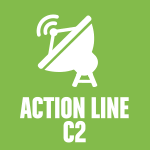 C2. Information and communication infrastructure
C2. Information and communication infrastructure
-
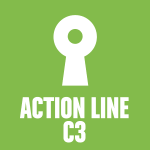 C3. Access to information and knowledge
C3. Access to information and knowledge
-
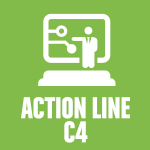 C4. Capacity building
C4. Capacity building
-
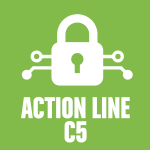 C5. Building confidence and security in the use of ICTs
C5. Building confidence and security in the use of ICTs
-
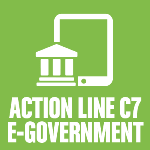 C7. ICT Applications: E-government
C7. ICT Applications: E-government
-
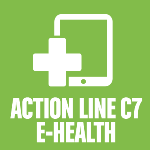 C7. ICT Applications: E-health
C7. ICT Applications: E-health
-
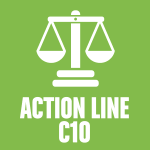 C10. Ethical dimensions of the Information Society
C10. Ethical dimensions of the Information Society
-
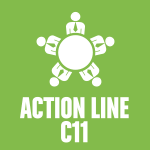 C11. International and regional cooperation
C11. International and regional cooperation
The main link with WSIS action lines refers to C5 Building confidence and security in the use of ICTs, the aim is to extend the scope of C5 to a broader range of applications and services ranging between human safety, security in all the existing fields, to disaster recovery and management.
Action line C4 Capacity building with specific reference to Safety managers, Security managers and practitioners, natural and human disasters first responders.
Action line C7. ICT Applications: E-government & C7. ICT Applications: E-health, session's topics are deeply related with Government and Health issues.
Action line C10. Ethical dimensions of the Information Society, ethical and privacy issues together with human rights are integral part of the session.
Action line C11. International and regional cooperation, major part of applications and services require a tight international and regional cooperation (e.g. border security).
Session's link to Sustainable Development Process
-
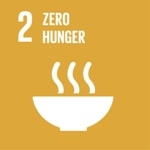 Goal 2: End hunger, achieve food security and improved nutrition and promote sustainable agriculture
Goal 2: End hunger, achieve food security and improved nutrition and promote sustainable agriculture
-
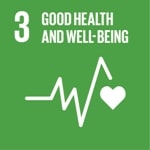 Goal 3: Ensure healthy lives and promote well-being for all
Goal 3: Ensure healthy lives and promote well-being for all
-
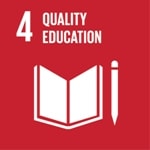 Goal 4: Ensure inclusive and equitable quality education and promote lifelong learning opportunities for all
Goal 4: Ensure inclusive and equitable quality education and promote lifelong learning opportunities for all
-
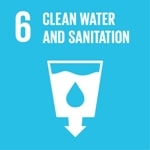 Goal 6: Ensure access to water and sanitation for all
Goal 6: Ensure access to water and sanitation for all
-
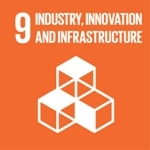 Goal 9: Build resilient infrastructure, promote sustainable industrialization and foster innovation
Goal 9: Build resilient infrastructure, promote sustainable industrialization and foster innovation
-
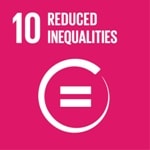 Goal 10: Reduce inequality within and among countries
Goal 10: Reduce inequality within and among countries
-
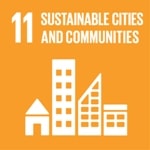 Goal 11: Make cities inclusive, safe, resilient and sustainable
Goal 11: Make cities inclusive, safe, resilient and sustainable
-
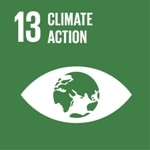 Goal 13: Take urgent action to combat climate change and its impacts
Goal 13: Take urgent action to combat climate change and its impacts
-
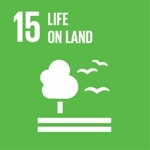 Goal 15: Sustainably manage forests, combat desertification, halt and reverse land degradation, halt biodiversity loss
Goal 15: Sustainably manage forests, combat desertification, halt and reverse land degradation, halt biodiversity loss
-
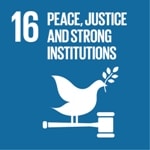 Goal 16: Promote just, peaceful and inclusive societies
Goal 16: Promote just, peaceful and inclusive societies
-
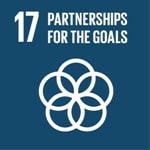 Goal 17: Revitalize the global partnership for sustainable development
Goal 17: Revitalize the global partnership for sustainable development
In addition almost all the SDGs and related WSIS WG matrix include the themes security, safety, disaster management and recovery.
Specifically:
SDG 1 END POVERTY IN ALL ITS FORMS EVERYWHERE
C5
SDG 2 END HUNGER, ACHIEVE FOOD SECURITY AND IMPROVED NUTRITION AND PROMOTE SUSTAINABLE AGRICULTURE
food security, slow onset disasters (drought, global warming, chemical products, etc)
SGD 3 ENSURE HEALTHY LIVES AND PROMOTE WELL-BEING FOR ALL AT ALL AGES
3.d Strengthen the capacity of all countries, in particular developing countries, for early warning, risk reduction and management of national and global health risks
ICTs for Safety & Security
SDG 4 ENSURE INCLUSIVE AND EQUITABLE QUALITY EDUCATION AND PROMOTE LIFELONG LEARNING OPPORTUNITIES FOR ALL
4.4 By 2030, substantially increase the number of youth and adults who have relevant skills, including technical and vocational skills, for employment, decent jobs and entrepreneurship
skills and new jobs C5
SDG 5 ACHIEVE GENDER EQUALITY AND EMPOWER ALL WOMEN AND GIRLS
5.b Enhance the use of enabling technology, in particular information and communications technology, to promote the empowerment of women
eEmpowerment, eInclusion, ICTs for Safety
SDG 6 ENSURE AVAILABILITY AND SUSTAINABLE MANAGEMENT OF WATER AND SANITATION FOR ALL
6.a By 2030, expand international cooperation and capacity-building support to developing countries in water- and sanitation-related activities and programmes, including water harvesting, desalination, water efficiency, wastewater treatment, recycling and reuse technologies
Water Security, Water sources Map
SDG 7 ENSURE ACCESS TO AFFORDABLE, RELIABLE, SUSTAINABLE AND MODERN ENERGY FOR ALL
7.1 By 2030, ensure universal access to affordable, reliable and modern energy services
7.a By 2030, enhance international cooperation to facilitate access to clean energy research and technology, including renewable energy, energy efficiency and advanced and cleaner fossil-fuel technology, and promote investment in energy infrastructure and clean energy technology
7.b By 2030, expand infrastructure and upgrade technology for supplying modern and sustainable energy services for all in developing countries, in particular least developed countries, small island developing States, and land-locked developing countries, in accordance with their respective programmes of support education
Power Grids, Micro generation, Green Energy, etc.
C5, critical infrastructure resilience, etc. etc.
SDG 8 PROMOTE SUSTAINED, INCLUSIVE AND SUSTAINABLE ECONOMIC GROWTH, FULL AND PRODUCTIVE EMPLOYMENT AND DECENT WORK FOR ALL
8.2 Achieve higher levels of economic productivity through diversification, technological upgrading and innovation, including through a focus on high-value added and labour- intensive sectors
8.3 Promote development-oriented policies that support productive activities, decent job creation, entrepreneurship, creativity and innovation, and encourage the formalization and growth of micro-, small- and medium-sized enterprises, including through access to financial services
C5 ICTs for safety & security
SDG 9 BUILD RESILIENT INFRASTRUCTURE, PROMOTE INCLUSIVE AND SUSTAINABLE INDUSTRIALIZATION AND FOSTER INNOVATION
9.1 Develop quality, reliable, sustainable and resilient infrastructure, including regional and trans-border infrastructure, to support economic development and human well-being, with a focus on affordable and equitable access for all
9.a Facilitate sustainable and resilient infrastructure development in developing countries through enhanced financial, technological and technical support to African countries, least developed countries, landlocked developing countries and small island developing States
9.c Significantly increase access to information and communications technology and strive to provide universal and affordable access to the Internet in least developed countries by 2020
This SDG (9) is directly connected with point 2 WSIS Forum 2019 High-level Segment and the identification of cyber warfare scenarios.
SDG 10 REDUCE INEQUALITY WITHIN AND AMONG COUNTRIES
SDG 11 MAKE CITIES AND HUMAN SETTLEMENTS INCLUSIVE, SAFE, RESILIENT AND SUSTAINABLE
11.3 By 2030, enhance inclusive and sustainable urbanization and capacity for participatory, integrated and sustainable human settlement planning and management in all countries
11.4 Strengthen e orts to protect and safeguard the world’s cultural and natural heritage
11.5 By 2030, significantly reduce the number of deaths and the number of people affected and decrease by [x] per cent the economic losses relative to gross domestic product caused by disasters, including water-related disasters, with a focus on protecting the poor and people in vulnerable situations
11.b By 2020, substantially increase the number of cities and human settlements adopting and implementing integrated policies and plans towards inclusion, resource efficiency, mitigation and adaptation to climate change, resilience to disasters, and develop and implement, in line with the Sendai Framework for Disaster Risk Reduction 2015-2030, holistic disaster risk management at all levels
SDG 12 ENSURE SUSTAINABLE CONSUMPTION AND PRODUCTION PATTERNS
12.8 By 2030, ensure that people everywhere have the relevant information and awareness for sustainable development and lifestyles in harmony with nature
12.a Support developing countries to strengthen their scientific and technological capacity to move towards more sustainable patterns of consumption and production
12.b Develop and implement tools to monitor sustainable development impacts for sustainable tourism that creates jobs and promotes local culture and products
SDG 13 TAKE URGENT ACTION TO COMBAT CLIMATE CHANGE AND ITS IMPACTS
13.1 Strengthen resilience and adaptive capacity to climate-related hazards and natural disasters in all countries
13.3 Improve education, awareness-raising and human and institutional capacity on climate change mitigation, adaptation, impact reduction and early warning
13.b Promote mechanisms for raising capacity for effective climate change-related planning and management in least developed countries, including focusing on women, youth and local and marginalized communities
SDG 14 CONSERVE AND SUSTAINABLY USE THE OCEANS, SEAS AND MARINE RESOURCES FOR SUSTAINABLE DEVELOPMENT
SDG 15 PROTECT, RESTORE AND PROMOTE SUSTAINABLE USE OF TERRESTRIAL ECOSYSTEMS, SUSTAINABLY MANAGE FORESTS, COMBAT DESERTIFICATION, AND HALT AND REVERSE LAND DEGRADATION AND HALT BIODIVERSITY LOSS
SDG 16 PROMOTE PEACEFUL AND INCLUSIVE SOCIETIES FOR SUSTAINABLE DEVELOPMENT, PROVIDE ACCESS TO JUSTICE FOR ALL AND BUILD EFFECTIVE, ACCOUNTABLE AND INCLUSIVE INSTITUTIONS AT ALL LEVELS
16.2 End abuse, exploitation, trafficking and all forms of violence against and torture of children
16.5 Substantially reduce corruption and bribery in all their forms
16.10 Ensure public access to information and protect fundamental freedoms, in accordance with national legislation and international agreements
16.a Strengthen relevant national institutions, including through international cooperation, for building capacity at all levels, in particular in developing countries, to prevent violence and combat terrorism and crime
SDG 17 STRENGTHEN THE MEANS OF IMPLEMENTATION AND REVITALIZE THE GLOBAL PARTNERSHIP FOR SUSTAINABLE DEVELOPMENT
17.8 Fully operationalize the technology bank and science, technology and innovation capacity-building mechanism for least developed countries by 2017 and enhance the use of enabling technology, in particular information and communications technology
17.16 Enhance the global partnership for sustainable development, complemented by multi-stakeholder partnerships that mobilize and share knowledge, expertise, technology and financial resources, to support the achievement of the sustainable development goals in all countries, in particular developing countries
17.17 Encourage and promote an active public, public-private and civil society partnerships, building on the experience and resourcing strategies of partnerships.